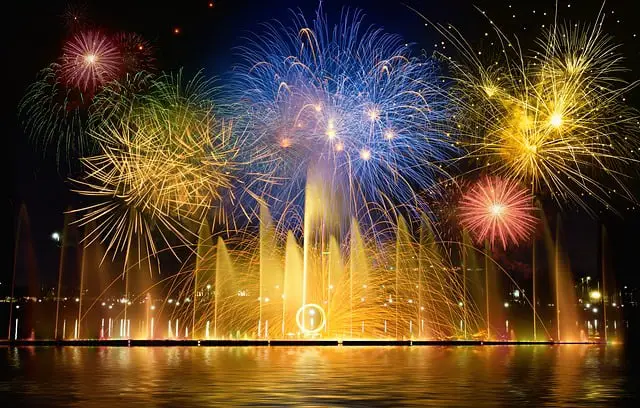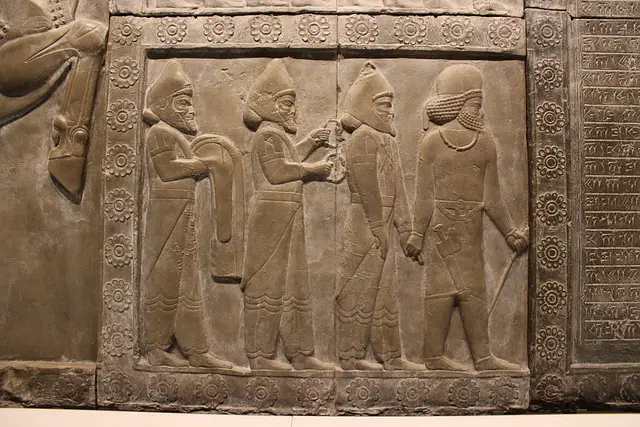New Year’s Day
Introduction
New Year’s Day, also called New Year or New Year’s, is the first day of January every year. It is the time for renewals, for taking a fresh start and for feeling hope for the coming future.
It is celebrated all over the world as the beginning to a new year full of happiness and hope. Celebrations for the New Year date back to ancient civilizations.

Origins
Historically, it was Mesopotamia that initiated the celebration of each New Year in 2000 BC. New Year was celebrated around the time of the vernal equinox (which takes place in mid-March).
According to the early Roman calendar, 1st of March was the first day of each new year. Eventually, the January was marked as the beginning month of the new year. Consequently, 1st of January was then celebrated as the New Year.
It was the day for inaugurating new consuls in 153 BC. Private celebrations in the month of March, however, still continued for some time afterward.

Church and New Year Celebrations
The Church, aware of the lagging practice of celebrating News Years’ Day in January, decided to step in. In 1570s, Pope Gregory XIII commissioned Jesuit astronomer Christopher Clavius to come up with a new calendar. This calendar, known as the Gregorian Calendar, was implemented a year later. It implemented a new rule, that only one of every four years would be a leap year.
Religious Significance
Most Western European nations officially adopted January 1st as the first day of the year even before the adopted the Gregorian Calendar. In pre-Christian times, during the reign of the Romans, this day was dedicated to Janus; the God of Gateways and Beginnings.
The month of January is also named after him. Later, Roman Catholics celebrated the Solemnity of Mary on this day, which is a feast honoring the Virgin Mary. This day also marked, in the Christian religious calendar, the Feast of the Naming and Circumcision of Jesus. The occasion is still celebrated by the Anglican and Lutheran Church(s).

Celebrations and Activities
Even though it is one of the oldest holidays to be celebrated globally, New Years’ Day customs and activities have undergone several changes over the past few centuries. The relationship between people and religion has also undergone massive change in the 20th century.
What used to be mostly religious celebrations have mostly been turned into global traditions, varying with culture and society. Today, most Americans blend religion and culture with their own family traditions (sometimes even making new ones).
Common Activities on New Year’s Day
Common activities on New Year’s Day include:
- Watching championship football games in the stadiums.- Times Square in New York hosts multiple exciting events to welcome the New Year.
- Making resolutions for the new year.
- Parades in different cities around the world (from London all the way to New York).
- Certain types of foods are also enjoyed on this occasion, including circular food (which symbolizes completed cycles) along with cakes and baked food items.
- In Italy, chiacchiere (which are honey-drenched balls of pasta dough fried and dusted with powdered sugar) are prepared for New Year’s Day.
- In Netherlands, a puffy, dough-nut-like pastry filled with apples, raisins, and currants is devoured by celebrating crowds. This dish is known as ‘olliebollen’.
- A traditional New Years’ drink is Champagne. Until the French Revolution, most important occasions were marked by religious ceremonies.
- After the Revolution, however, Champagne replaced Holy Water and the tradition to drink Champagne to mark important events originated in Europe before spreading to the rest of the Western world.
- Other activities and customs of New Year’s Day include ice hockey, concerts, attending Church services and maybe even horse racing.
New Year Superstitions
Like every other culture, there are numerous superstitious beliefs attached to New Years’ Day as it is celebrated across the world. These superstitions are based on the belief that whatever happens on the very first day of the year (New Years’ Day) will set the tone for the coming year.
Some of the most common New Year superstitions include not doing laundry in the belief that washing away something may cause the death of a family member or wash away fortune or good deeds. Likewise, wearing new clothes on the day are meant to bring wealth and abundance in the new year.
New Years’ Day Music
Music is a big part of the New Years’ Day celebrations. Music associated with New Year’s Day comes in both classical and modernist genres. Certain songs have become a fixture on New Year’s Day, including ‘The Year Is Gone Beyond Recall’, which is a traditional Christian hymn sung on this day since as far back as 1713.
Other New Years’ Day Traditions:
World over, countries have various different traditions for celebrating the New Year. In Scotland, there is a tradition in which the first person to enter the house determines the kind of year the residents will have. The ‘first footer’, as such people are called, brings symbolic gifts with them such as shortbread and black buns.
In Columbia, residents carry empty suitcases around the block in hopes of getting a travel-full New Year. In Finland, people predict the coming year by casting molten tin into a container of water, before interpreting the shape the metal takes after hardening. In Spain, people must eat a grape with each chime to welcome the New Year.
Summary
- New Year’s Day is celebrated to marked the beginning of the new year, typically on January 1 of each year.
- Celebrations for the New Year date back to ancient Mesopotamian civilizations in 2000 B.C.
- Romans celebrated New Year on 1st of March. This was later changed to 1st of January with the change in Roman calendar.
- New Year’s Day is also the day of the Solemnity of Mary as well as the Feast of Naming and Circumcision of Jesus.
- Modern New Year’s Day traditions include attending games, making resolutions and going to parades and concerts.
- New Year’s superstitions include wearing new clothes on the day and not doing laundry or washing any clothes.